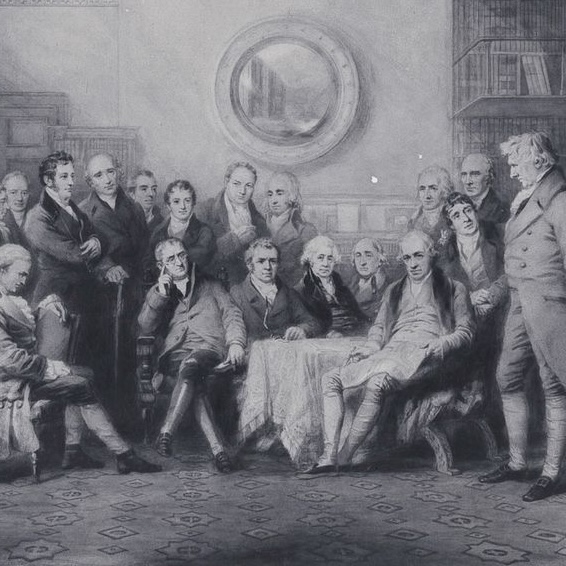London Institute Council
We have updated the role of trustees and created a forum of governors to help us thrive. Together, these form the London Institute Council.
Rethinking discovery
Four centuries ago, in The New Atlantis, Sir Francis Bacon sketched a utopian vision of what a research organisation might look like. Most of his ideas have never been tried. Instead, the vast majority of scientific research takes place at universities: organisations optimised to pass on knowledge rather than create it. Only in the last century was research added, as a bolt-on. To this day, university scientists spend most of their time on teaching and admin.
By contrast, the London Institute was tailor-made to advance discovery. For an analogy, consider the three things the chair of the British Olympic Association identified as necessary for athletes to win medals: full-time dedication, expert help and the inner game. As we argued in The Telegraph, it’s the same with scientists making breakthroughs. That’s why we provide our researchers with the freedom to focus on discovery full-time; world-class support staff to help fund and communicate their research; and performance coaching, the equivalent of sports psychology.
All this amounts to an experiment in how we organise science itself—one we are conducting, fittingly enough, in the home of British experiment. With ten chemical elements and 15 Nobel prizes to its name, the Royal Institution is the world’s most distinguished science building. But as experiments got too big for the Mayfair mansion, discovery in the building dwindled and died. Now we’re bringing it back in the form of theory, while developing a research institution worthy of Bacon’s vision.
The story of our board
As the London Institute has developed, so has its board of trustees, passing through three successive phases. In the first phase, when we were starting out, our board consisted of eminent scientists and heads of department, such as Tom Tombrello, the head of Caltech physics. They lent their stamp of competence to a young organisation.
In our second phase, as we became better known, our trustees were mainly leaders of learned societies and chief scientific advisors, such as Sir John Beddington, the former Chief Scientific Adviser to the Prime Minister. They helped us get recognised by UKRI and start a discussion with the government about how research is organised in Britain.
In 2025, we embarked on phase three. Now we are looking for trustees who, as well as offering their insights, can advance the Institute’s mission by either making or leveraging financial contributions. In this, we are inspired by the example of Caltech. At a time when government support for basic science was under threat in America, Caltech made financial sovereignty an abiding principle. It systematically reformed its board, contributing to its $3.4 billion Break Through fundraising campaign, one of the most successful such campaigns in history.
Before launching our third phase, we consulted with Caltech president Thomas Rosenbaum and Caltech development director Dexter Bailey, who visited the London Institute in 2025. They led the reformation of the Caltech board and the record-breaking campaign.
Trustees and governors
As well as updating the role of our trustees, in 2025 we expanded our circle of advisors to include the newly created forum of governors. We call our trustees and governors collectively the London Institute Council.
Governors play a lighter-touch role than trustees in that they are not liable for the long-term success of the Institute or registered with the Charity Commission. Trustees, on the other hand, play a more decisive role in advancing the Institute, and enjoy the commensurate recognition that goes with it.
Apart from this distinction of degree, all Council members share the same three responsibilities. First, they make an effort to attend our events and meetings and learn about the Institute. Second, they are active in engaging friends and colleagues who have the interest and philanthropic ability to support our mission. Third, they pledge or broker financial contributions that will advance the priorities of the Institute.
Council members are drawn from various philanthropic, corporate and entrepreneurial backgrounds. Their appointment lasts two years. If their term is fruitful, it can be renewed.
Council members are welcome at our seminars, popular talks and Friday evening drinks. They are also invited to St Scholastica’s Feast, our Christmas party and our joint events with the Royal Institution. In addition, trustees are invited to the occasional trustee dinner and are expected to attend, in person, most of our three board meetings per year.
How our funding works
The London Institute has two kinds of costs: intrinsic and extrinsic. Whereas intrinsic costs are the usual costs associated with running a business, extrinsic costs are particular to the research world.
Our intrinsic costs come in three main types: our senior scientists, such as Yang-Hui He; our staff, such as science writer Ananyo Bhattacharya; and rent for our rooms in the Royal Institution. Because we don’t do experiments, we don’t spend much on equipment. Chalk and a laptop is all we need.
Extrinsic costs are unique to the academic sector. That’s because in the career trajectory of a scientist, it’s customary to spend stints at different institutions early on in their career. These are either postdocs or fixed-term fellowships, and the cost of these stints are what we call extrinsic costs.
We currently have two main types of extrinsic costs, both funded by purpose-built grants and donations. These are the cost of our postdocs, and the cost of our programme of Russian and Ukrainian scientists. Note that the cost of each is not just salary, but rather twice this, when you take into account space, support and communication. The basic idea is that an extrinsic activity should break even. When it doesn't, we lose money which we have to recover elsewhere.
Many donors are inclined to fund extrinsic costs, because they’re drawn to new activity. But funding our intrinsic costs is what really affects our bottom line. It’s what we need most from our trustees and governors.















